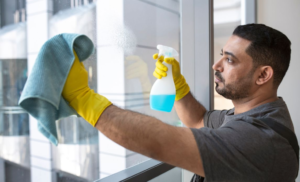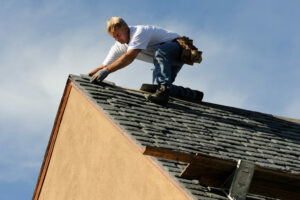Building a deck requires specialized craftsmanship and experience. Professionals have strong supplier relationships and can procure premium materials at competitive prices. They also have a firm grasp of local regulations, ensuring your project adheres to permits and codes.
Ask friends and family for recommendations about reliable contractors. They can provide valuable insights into their work quality and professionalism. Contact Virginia Deck Builders now!

The cost can vary depending on the type of deck you want, the size, and the material used. However, hiring a professional can help you save money in the long run. A well-established company will have good supplier connections and can offer quality materials at reasonable prices. They also know local building codes and regulations to ensure your deck is safe and structurally sound. Besides, they can guide you on the best design and features to complement your home and lifestyle.
Aside from material costs, labor is another major expense when it comes to building a deck. Labor rates vary from one area to the next, and large cities typically have higher labor costs than rural areas. Also, the location of the deck can affect your overall price. Additional labor may be required for excavation and foundation work if it is in a hilly or remote area. The climate in your area may also require special construction methods or materials to withstand snow and rain. Finally, if your deck is going to be over a pool or garden, you may need to install additional safety measures like stairs and railings.
A well-established and reliable deck builder can offer valuable insights into your project and suggest ways to cut costs without compromising on the quality of your new deck. They also provide comprehensive follow-up services, including warranty and maintenance advice. In addition, they can give you an estimate for the entire project based on their experience and previous projects. This can help you decide whether or not to hire them. If you do, you will need to sign a contract before they start working on your project.
Time Savings
When hiring a professional deck builder, you can save time by reducing the amount of research and planning that you have to do. They’re familiar with all the ins and outs of building a deck, so they can provide you with accurate timelines and estimates for your project. They can also help you avoid unexpected expenses by staying within budget.
You can also save time by choosing a contractor with experience working on similar projects to yours. Ask potential contractors for references and testimonials from previous clients. This will give you an idea of their quality of work and professionalism.
It’s also helpful to find out how long it takes a contractor to respond to your inquiries. You don’t want to deal with a builder who takes several days to reply, as this can affect the progress of your deck project. Look for someone who aims to answer your calls and emails promptly, at the very least by the end of the business day.
Finally, it’s important to hire a professional who is familiar with local regulations and building codes. This will ensure that your deck adheres to all safety requirements and is structurally sound. A licensed contractor will be able to navigate the permit process quickly and efficiently, which can save you a lot of headaches.
Additionally, you can save a lot of time by working with a deck builder during off-peak seasons. Fall and winter are ideal times to get your deck project started because plants, trees, and grass are dormant, which minimizes the impact of construction on your landscaping. You can also take advantage of seasonal discounts offered by many deck builders to save money on your project.
Quality Assurance
Professional deck builders offer an all-inclusive service package, allowing you to rest easy knowing that your project is in good hands. They prioritize accuracy in all aspects of construction, from precise planning to coordinated execution. As a result, their extensive experience minimizes the risk of costly errors and delays. This efficiency also translates into substantial time savings, as they can complete projects within the designated timeline.
A well-established deck builder often has industry connections that allow them to acquire high-quality materials at discounted prices. This provides significant cost-savings for homeowners, and it also ensures that your outdoor living space is constructed with the best materials available in the market. Furthermore, they are aware of all the safety precautions and guidelines that should be followed during construction, ensuring your outdoor retreat is structurally sound and aesthetically appealing.
When searching for a reliable contractor, it is essential to carefully evaluate each candidate’s qualifications and track record. Online resources and personal recommendations are excellent resources for finding contractors that have a strong reputation and expertise in the field. Additionally, look for evidence of exemplary craftsmanship in previous projects to gauge the quality of workmanship that you can expect to receive from your potential contractor.
Finally, look for a deck builder who provides design consultation services to collaborate with you on your vision and objectives. They should be willing to work with you to customize your outdoor living space and meet your requirements and constraints, such as the desired size, materials, and budget. They should also provide detailed estimates, reducing the chances of any unexpected charges during the course of your project. Furthermore, a reputable deck builder will stand by their work and offer warranties or aftercare services to provide peace of mind that your outdoor living space is built to last.
Problem Solvers
Whether it’s a new deck, porch, patio or fence, the best contractor will anticipate challenges and be ready with solutions. This ensures that the project progresses smoothly and stays within budget. Professional builders also stay in regular communication with homeowners to address any concerns or issues as they arise.
When evaluating potential contractors, pay attention to their response time and the clarity of their communication. If they can’t provide you with a clear completion date or don’t return your calls promptly, it may be a red flag. Look for a company that has glowing reviews or testimonials to find out what other customers have experienced.
Local Deck Builders
A local deck builder is familiar with your city’s building codes and regulations, so they can help you avoid delays caused by unforeseen complications. They also know how to manage the permit process and inspections, saving you valuable time and ensuring that your new deck complies with all safety requirements.
One common problem that can derail a deck construction is finding and repairing underground obstacles, such as water and gas lines. These issues often require relocating or rerouting lines, which can take months to complete. A skilled deck builder will work around these issues, usually by installing a new ledger board that is attached directly over the joists. This allows a professional to inspect it for a solid connection and prevents the deck from damaging the house.
In addition to addressing unforeseen problems, a professional will also install a waterproof barrier between the deck and your house to keep moisture from seeping through and causing damage. They’ll also use galvanized or stainless-steel hardware that is rated for outdoor use and won’t rust quickly.
Accountability
During the hiring process, ask each contractor what their responsibilities and accountability are for the project. An experienced contractor will be able to answer these questions quickly and concisely.
In addition, inquire about their policy on client payments. For example, some contractors require a percentage of payment upfront and then divvy up the remaining balance over the course of construction. This practice puts the homeowner at risk of financial liability should something go wrong, such as weather or construction delays. A reputable deck builder will limit their exposure by establishing a payment schedule that aligns with milestones rather than requesting a significant amount upfront.
Local Research
One of the most effective ways to find a trustworthy deck builder is by seeking out recommendations from friends and family members who have had a positive experience with their services. You can also conduct a local search by visiting home improvement stores or lumber yards. These businesses often work closely with local builders and can provide you with valuable insights regarding the quality of their workmanship and customer service.
Ask each contractor if they are insured and bonded. Those who lack insurance and WSIB pose a huge financial liability to homeowners in the event of an accident on the job site. Furthermore, they may not be able to carry out their obligations as promised under the contract, such as meeting deadlines or delivering on certain features. A reputable contractor will have all of these details covered with comprehensive insurance and compliance with WSIB regulations. Ask each contractor to provide proof of these credentials during the interview process. This is an important step in determining whether you can trust their work and protect your investment.






